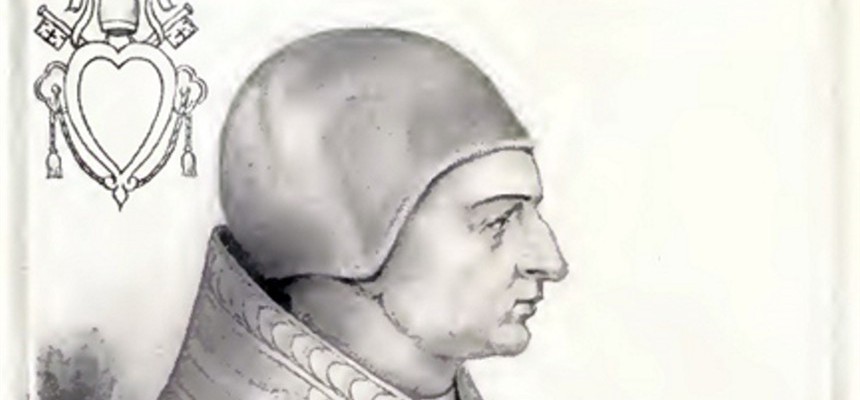
Peter di Porca was born, sometime around 790, to a noble Roman family. He had at least one brother, Benedict. Orphaned at age 12, Pope Leo III placed him in the schola cantorum, the best school in Rome. There he did well and he joined the Church as an acolyte. Stephen IV/V raised him to a sub-deacon. Pope Paschal ordained him a cardinal-priest and bestowed the pastorship of the Church of Sts. Martin and Sylvester on Peter. He became an archpriest under Gregory IV.
Pope Gregory IV died on January 25, 844. Within hours, the general public were hailing a deacon named John as the new pope. He had no links to the nobility but the people wanted him. A mob seized the Lateran Palace and enthroned him as Pope John VIII. The nobles had chosen Peter and would not accept the pope of the people. They broke into the Lateran, ejected John from the throne and crushed the opposition. They wanted to kill the one-day old pope but Peter wanted to save him and had him confined to a monastery. The rest of John’s life is lost to the annals of history. The whole episode took two days.
When Peter was to be enthroned, he refused to use his own name. He would be Peter II and he did not think himself worthy of taking the Apostle’s name. Ever since his decision, enthroned popes have taken a new name. He took the name of Sergius II. There was not enough time to contact Emperor Lothair before the consecration. When the emperor was informed, he was furious. Not asking permission was against the Constitutio Romana of 824. Lothair sent his son, Louis, the Viceroy of Italy, with an army to reestablish his authority. Sergio, crippled with gout though he was, went out to meet the viceroy and calmed him before allowing him into the city. Part of the bargain included making the Emperor’s advisor, Drago, the papal legate to France and Germany and taking the oath of fealty to the Emperor, but not expecting the people of Rome to do so. Louis alone was allowed into the city where, on June 15, 844, he was crowned co-emperor and king of the Lombards at St. Peter’s Basilica. This is the same place that his great grandfather was crowned emperor in 800.
Sergius went on a building spree with his brother, Benedict. They improved churches and aqueducts. They improved the Lateran Basilica and rebuilt his old schola cantorum. To get the funds for these projects, they sold appointments to various Church positions to the highest bidder. This was the serious beginning of simony. Some entries into history say that Sergius was really too sick to govern the Church and abandoned rule to some less scrupulous sorts. Others say he was somewhat cantankerous and may have just decided to do what he is charged with.
During the reign of Pope Gregory, the seaport of Ostia was improved due to rumors of the imminent attacks of the Saracens, the Muslim army. Sergius was well aware of these rumors and the rebuilding of Ostia’s port. Yet, when the attacks came, in the summer of 846, Rome was woefully unprepared. Once the enemy had attacked Ostia and Portus, they marched on Rome, itself. The strong Aurelian walls no longer encompassed the whole of the city. The basilica of St. Peter’s and the church of St. Paul were outside the walls. Sergius and the Roman population watched as the enemy ravaged the outskirts of the city, sacked the two big churches and made off with three tons of gold and 30 tons of silver. Luckily, King Louis and his army arrived before the city could be overrun.
This turned out to be the last fall for Sergius. His next project was to make peace between the patriarchs of Grado and Aquileia. He died, suddenly, in the midst of negotiations on January 27, 847, having ruled almost exactly three years.
Pope Sergius was buried at St. Peter’s Basilica.

Recent Comments